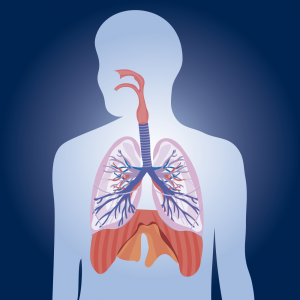3 ways to release mucus from your lungs
Our respiratory system has its own self-cleaning mechanism. Pollution, smoking, and some conditions of the respiratory system can slow it down, making it vulnerable to virus and bacterial attack. When your system is affected, you can feel chest congestion, inflammation, breathlessness, and end up with lung infections.
In a healthy person, the respiratory system produces a litre or two of mucus per day. Without this transparent, viscous cleanser, our respiratory system becomes dry and malfunctions. However, too much mucus leads to respiratory complications such as bronchitis and pneumonia. The airway narrows and becomes blocked, making it difficult for you to breath. Excess mucus also becomes a breeding ground for viruses and bacteria.
Key ways to prevent or decrease excessive mucus build-up in your lungs are controlled coughing, mucus drainage, and “percussion”.
You shouldn’t try these if you already have breathing difficulties; instead, go and see your GP. These exercises do not replace medical advice.
Controlled coughing
Coughing is a natural defence mechanism to remove mucus from your airways. But if you cough too much it can harm your respiratory tract and lungs. Uncontrolled coughing results in inflamed airways, causing them to narrow and trap mucus, which can then infect your lungs. Conversely, “controlled” coughing loosens mucus and moves it through your airways, keeping your lungs and airways mucus-free.
Here is an easy tip on help remove mucus from your airway.
- Sit on a chair with your shoulders relaxed and feet on the floor.
- Placing the palms of your hands, with fingers interlocked, tight against your stomach, inhale deeply through your nose.
- As you exhale, lean forward and push your hands gently into your tummy, and cough 2 or 3 times with your mouth slightly open. Make the coughs short, loud and sharp.
- Inhale again, but slowly and gently through your nose. Do not breathe fast, or through your mouth. Otherwise you may block the mucus leaving the lungs. It also can cause uncontrolled coughing.
- Rest and repeat if necessary.
Draining mucus from your lungs
This diaphragmatic or “belly breathing” may be familiar to those who do Pilates, meditation or yoga. When holding certain postures, it can also help remove mucus. You can do this on a bed or the floor, but you will need pillows or cushions. Make sure you have an empty stomach, and haven’t eaten in the last two hours. If you use an inhaler, wait at least 20-30 mins after using it.
To breathe “diaphragmatically”, place one hand on your tummy and the other on your chest. As you breathe in deeply and slowly through your nose, push your tummy out as far as possible against your hand. You should feel the hand on your tummy move, whilst the hand on your chest doesn’t. When you breathe out, you should be able to feel the hand on your tummy move in.
You can do this in the following 3 positions, applying the breathing technique for 2-3 mins each. If you need to cough, sit up and do controlled coughing as explained above.
Lie on your back. Your chest needs to be lower than your hips, so place at least two pillows under your bottom. Use other pillows under your head to give support.
Lie on one side, and place two or three pillows under your hips, and another pillow under your head. Again, your chest should be lower than your hips. After a few minutes, turn over and repeat on the other side.
Lie on your stomach. Place two or three pillows under your hips, and another pillow under your head.
Chest percussions
For best results, you can do this at the same time once you get in position for mucus drainage, but before you start your deep breathing, as this technique loosens the mucus in your lungs and facilitates drainage. It may be easier to have someone do this for you.
- First, cup your hand, and lightly tap your chest and (if possible) your back. You may hear a loud sound, but you shouldn’t feel any pain. Tap for a minute on each side, but avoiding your spine and breastbone.
We hope this information is useful. If you need advice or have any questions about our treatments, please contact us. You can find us in Mill Hill Broadway and Islington. We are always glad to help.
If you like this blog, please share!





GREAT AND HELPFULTIPS I HOPE YOU ALL CONTINUE BLOGGING. THANKS FOR SHARING
GOD BLESS YOU ALL ❤
Plsend exercise scedule on e mail
Opening Times
9am to 8pm on Mon to Thu
9am to 3pm on Fri
10am to 5pm on Sat and Sun
Tel: +44 20 7993 2720
What’s App: +44 7946 076 725
E-mail: enquiries@pereaclinic.com
Thanks for the great tips on releasing mucus from my lungs – very helpful!
A quick editing note: there are two spell-check errors on this web-page – “breath” is used instead of “breathe”.
Thanks again.
Hi Mike,
Thank you for your comment, we are glad this content has been of value to you. Also thanks for noticing the error and letting us know, this allowed us to correct it.
Kind regards,
Perea Clinic team